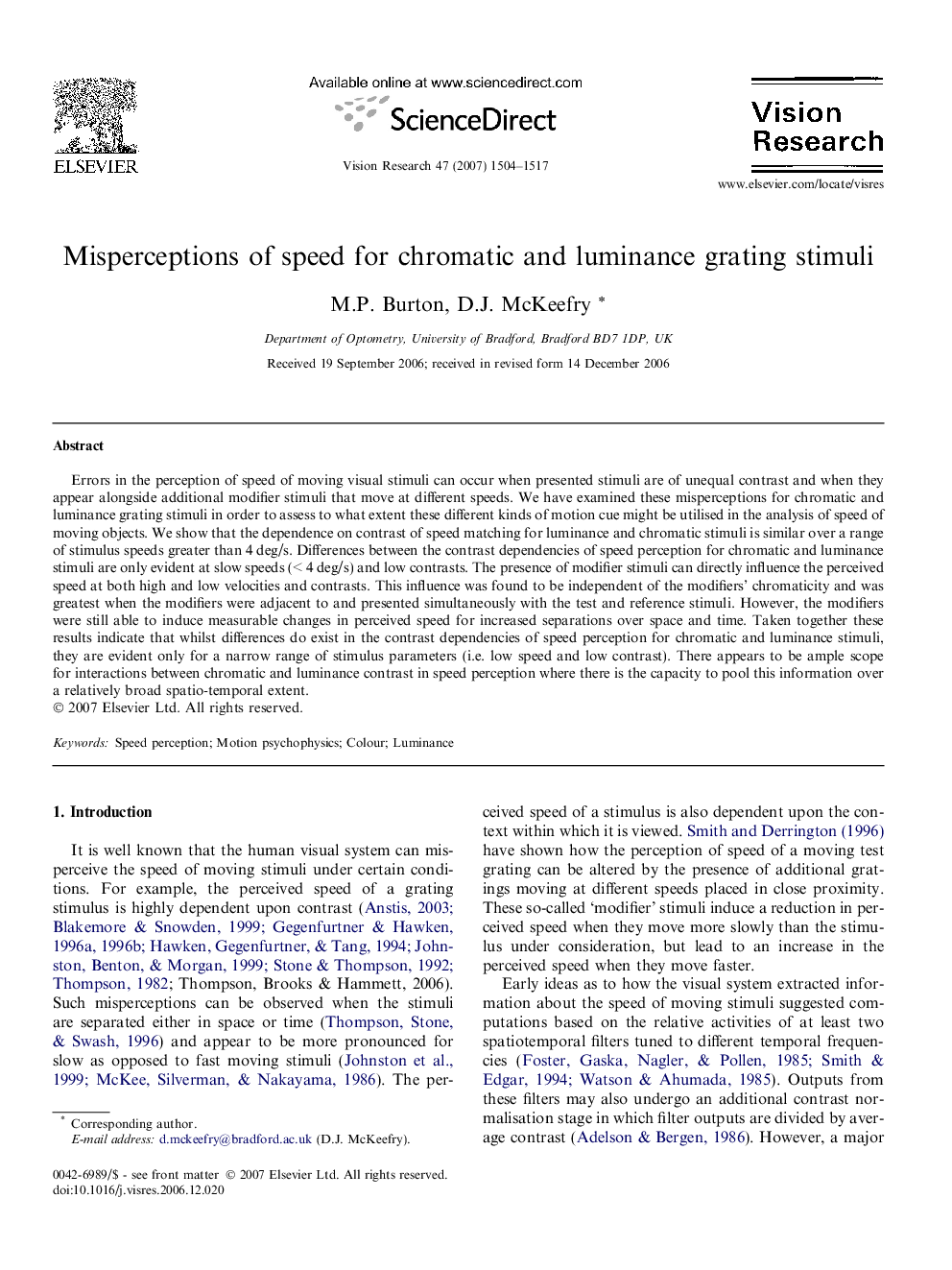| Article ID | Journal | Published Year | Pages | File Type |
|---|---|---|---|---|
| 4035711 | Vision Research | 2007 | 14 Pages |
Errors in the perception of speed of moving visual stimuli can occur when presented stimuli are of unequal contrast and when they appear alongside additional modifier stimuli that move at different speeds. We have examined these misperceptions for chromatic and luminance grating stimuli in order to assess to what extent these different kinds of motion cue might be utilised in the analysis of speed of moving objects. We show that the dependence on contrast of speed matching for luminance and chromatic stimuli is similar over a range of stimulus speeds greater than 4 deg/s. Differences between the contrast dependencies of speed perception for chromatic and luminance stimuli are only evident at slow speeds (< 4 deg/s) and low contrasts. The presence of modifier stimuli can directly influence the perceived speed at both high and low velocities and contrasts. This influence was found to be independent of the modifiers’ chromaticity and was greatest when the modifiers were adjacent to and presented simultaneously with the test and reference stimuli. However, the modifiers were still able to induce measurable changes in perceived speed for increased separations over space and time. Taken together these results indicate that whilst differences do exist in the contrast dependencies of speed perception for chromatic and luminance stimuli, they are evident only for a narrow range of stimulus parameters (i.e. low speed and low contrast). There appears to be ample scope for interactions between chromatic and luminance contrast in speed perception where there is the capacity to pool this information over a relatively broad spatio-temporal extent.
